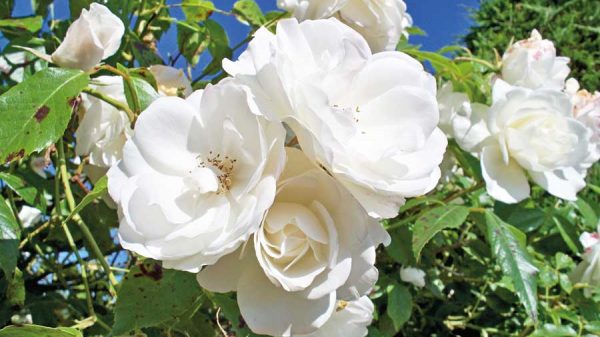March is an appropriate title for the month as everything in the garden starts to move, and move at pace, grass needs cutting seeds need sowing and plants need attention.
Over the winter months the colour in my garden has been provided by the vibrant stems of Cornus (Dogwood) and Salix (Willow), red, orange, burgundy and acid green arching stems catching the light of the winter sun. But it’s that time of year when we need to prune these seasonal gems if we are to see the same this autumn and winter. The question is how far do you cut them back? They are generally very tough shrubs and will tolerate cutting hard back, down to about 7.5cm(3”) from soil level, but they can also be what we call stooled, which involves cutting the stems to say 60cm(2ft) then in subsequent years prune to within 2.5cm (1”) of this point. If you have an old shrub that is taking over or is too large it can be cut down to about 7.5cm (3”) then pruned annually as described previously. Its a good idea to apply a general fertiliser in the spring as recovering form this type of pruning requires some energy.
If you want to increase your plants, cut the prunings into 23cm(9”) lengths with a bud at the bottom and a bud at the top, you can either put around the edge of a pot of gritty compost spacing bout 2.5cm(1”) apart and place in a shady place in the house, a cold greenhouse or cold frame will do. Most members of the willow and dogwood family will root in a jar of water on the windowsill, in-fact I have some on the kitchen windowsill that have rooted after only a couple of weeks. My Partner Sue, makes woven rings out of the coloured stems, they keep well and can be enhanced with a small posy of flowers, great to decorate your front door for Easter.
I love to see fresh spring growth, buds bursting, leaves unfurling and the promise of a tapestry of greens to compliment summer colour, but then on a morning stroll I notice, an invasion, yes a battalion of molluscs determined to turn my leaves into lace curtains, Slugs and Snails must be the number one pest in most gardens with the ability to not only consume large amounts of green material but can reproduce at an alarming rate. If only we could train them to eat grass, they would overnight become a welcome helper but sadly that is not likely. I prefer to use organic solutions for pest control but for some reason many are either quite pungent (Garlic Sprays) or unpleasant to deal with (Beer Traps). I haven’t found Garlic too effective on Slugs and Snails but I have used Beer traps to great effect, sink a deep waterproof dish in the border and half fill with beer, the slugs and snails are attracted to it and drown in the beer. The unpleasant bit is dealing with the contents of the trap, but I just throw it on the compost heap, it all rots down. Setting beer traps now is a great idea and catches the first wave of Slugs and Snails before they start to breed, Don’t worry you wont kill all of them but reduce the population, its a sort of respectful relationship, don’t mind you eating a little but don’t destroy my favourite plant.
The other issue that causes a sigh and a groan is weeds, where do they come from?, how come despite pulling up buckets of weeds there always seem to be more waiting to emerge. A Head Gardener i worked for as an apprentice, coined the phrase ‘one years seed equals seven years of weeds’, Given the volume of seed they produce and in some cases seed several life cycles in a year its no surprise, so the challenge initially is to remove weeds before they have chance to flower. The soil will have quite a build up of seed especially if weeds have been allowed to seed for years.
Annuals (those that flower seed and then die), are the easiest to control but generally produce the most seed, Perennial weeds are more of a challenge, Dock, Dandelion, have thick fleshy tap roots that tend to break leaving a small root to grow, Nettles and Couch Grass have meandering thick roots that will send up shoots every few inches, quickly populating large areas. The key is to remove as much root as possible, be thorough rather than being in a rush to finish. Weeds can be composted but if you don’t have a heap then send them to the Municipal waste site, they use a ‘Hot’ composting method that kills weed seed and roots too.
Next Month, (Growing plants from plugs, Seeding bare patches in the lawn, and Sowing Hardy Annuals.)
Happy Gardening
Martin







